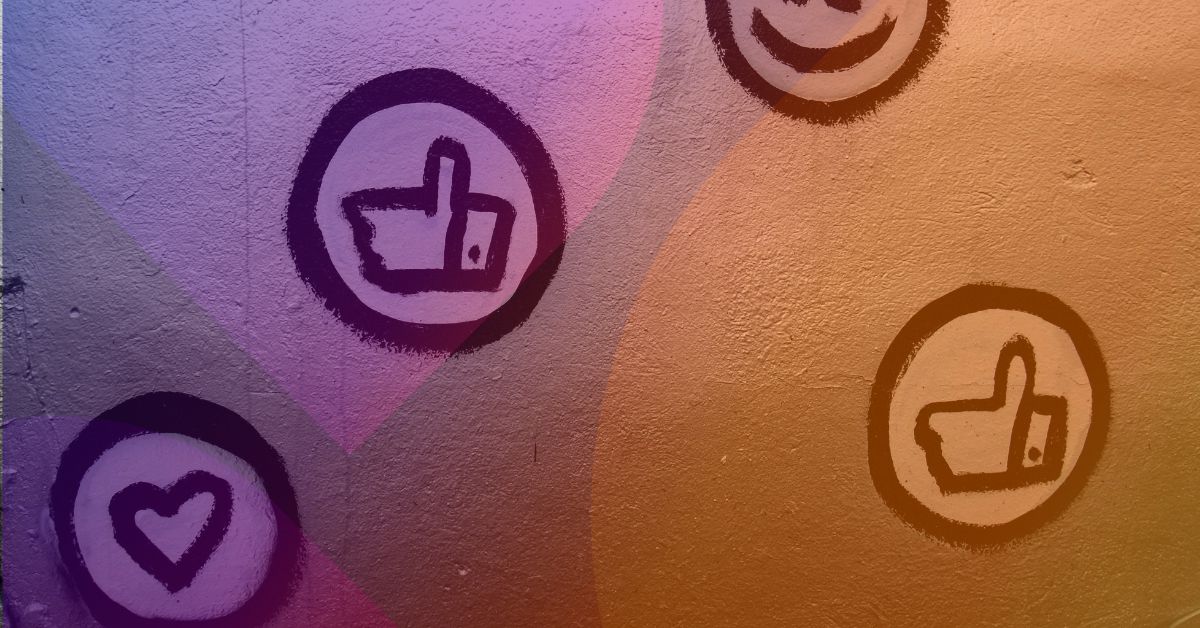Facebook is no longer just a place to share personal experiences, it has become an important marketplace where businesses can actively interact with their target audience.
With organic reach declining, the importance of interaction on Facebook is more important than ever for businesses. With the right interaction, you can not only increase your brand's visibility, but also build a deeper connection with your community.
In this article, we'll take a look at why engagement on Facebook is so important and how it has changed over time.
What is an interaction on Facebook?
To generate more interactions on your Page, it's important to understand how Facebook itself defines interactions. There are five basic types of interactions:
- Like: Confirming a post by clicking the "Like" button.
- Comment: Posting a comment related to a specific post.
- Share: Share a post with other Facebook users.
- Click a link: Clicking a link in a post.
- Video views: Clicking on and watching videos.
Of course, there are other actions that Facebook users can take. Contrary to popular belief, these actions are not considered interactions as defined by Facebook:
- Reading posts
- Clicks on Photos
The third point, sharing, is often misunderstood but is important to emphasize:
"Liking" a Facebook Page does NOT count as an interaction. Clicking the "Like" button on a post, on the other hand, counts as a real interaction and therefore contributes positively to your Facebook page's performance.
Measure interaction on Facebook:
Your interaction rate is the ratio of the number of fans you have versus the number of interactions your posts receive. And it should be as high as possible.
This is because Facebook does not show each of your posts to each of your fans. The algorithm is Facebook's way of making sure that people only see posts in their News Feed from Pages they find interesting. If a user does not interact with a Page's posts, it will seem less relevant to them and will be shown less frequently.
Likes, comments, shares: The number of interactions with a post provides an overview of engagement. You can find these numbers right below the post.
Interaction rate formula:
Interaction Rate (%) = ((Likes + Comments + Shares) / Total Reach) * 100
The interaction rate is the ratio of interactions to total reach. A higher interaction rate means your content is resonating.
High interaction rate = High-Quality Facebook Page
The general formula for success on Facebook is shockingly simple: the more interactions you get on your posts, the higher the quality of your Facebook profile or page. Simply put, give your followers content that gets a lot of interactions and use all the options that Facebook "provides".
And what you like: As you generate more interactions, your organic reach on Facebook will gradually increase - so you can also generate a lot more traffic to your own website via Facebook, for example, by providing your followers with the highest possible quality experience directly on Facebook.
Overall, Facebook interaction is a critical success factor that not only affects immediate visibility but also has a long-term impact on your relationship with your followers and the success of your marketing strategy.
Practical tips to increase interaction on Facebook
1. Know your audience
Mark Zuckerberg's vision is clear: Facebook should become a perfectly personalized newspaper for each user. So it is important to focus on what your audience really wants.
It's all about those users. There is no point in "just" targeting Facebook reach in general - if that reach is irrelevant, your strategy will not succeed.
Instead, it is critical to understand your audience (and your fans). Ideally, your audience consists of users who are interested in your content. Even if you already have a critical mass of followers on Facebook, it is important to listen to your fans. This is the only way to find out what is really valuable for your Facebook page - especially in the context of your current topic.
2. Spice up your posts with images
An effective way to increase interaction on your Facebook Page is to include compelling images in your posts. Studies such as Buzzsumo's have shown that posts with images are shared twice as often as text-only posts.
Attractive images grab the attention of your followers and encourage engagement. People tend to comprehend visual content faster and respond more emotionally. By including high-quality, relevant images in your posts, you increase the likelihood that people will not only see your content but actively interact with it.
Remember, the visual component has a huge impact on content sharing. If users find your images appealing, they are more likely to share them with their own network, leading to organic reach expansion. So focus on visual appeal to increase the interaction rate of your content.
3. Content mix and video formats
Without overriding the previous tip, your goal should be to use diverse content formats. Integrating different formats such as text, images, video, and events provides variety and appeals to your target audience's different preferences.
The strength of video content, especially reels, on Facebook is particularly noteworthy. Studies have shown that video has a higher interaction rate and that Reels - short, entertaining video clips - are especially attention-grabbing.
Combining video content with other formats creates a balanced content strategy that is both visually appealing and informative. This allows you to appeal to your audience's preferences and maximize interaction rates.
Remember that variety and innovation are key to keeping your audience engaged. Experiment with different content formats, analyze your community's reactions, and adjust your strategy accordingly to create a sustainable and diverse presence on Facebook.
4. Encourage more interaction
Another great tip for encouraging interaction on your Facebook Page is to focus more on interaction-based content. Polls, questions, and contests are particularly effective tools.
By asking specific questions, you encourage your community to comment. This not only creates direct interaction but also encourages the development of a vibrant online community. Use open-ended questions to gauge the opinions and ideas of your audience and show that you value their voice.
Polls allow you to gather feedback from your followers and understand their preferences systematically. This can not only help you create relevant content but also increase the sense of participation.
Contests are a great way to increase engagement. Not only do they incentivize participation, but they also encourage content sharing, which can increase the reach of posts.
5. Community management is key
We touched on this briefly above, but it can't be stressed enough. Community management is far from getting the attention and importance it deserves. Publishing a high-quality mix of varied content is a good start to increasing the number of followers. But it is even more important to reach these people beyond that, to actively engage them in conversations or inspire them to take action.
There are Facebook users who simply want to express their opinions, but there are also those who are interested in a constructive exchange. It is important to take a closer look at the fans who actively participate on the Facebook page. Passive readers are important, too, but the "interactive" ones are far more important.
If you are able to engage with these users in a meaningful and mutually beneficial way, your community will gradually become higher quality - which will ultimately inspire many other users.
6. Find the best time to post on Facebook
What is the best time to post on Facebook? This is definitely one of the most frequently asked questions. Facebook's News Feed is based on an algorithm, which means your followers don't necessarily see your content the moment you post it.
However, post timing is an important signal to the Facebook algorithm. And Facebook itself says that you're likely to see more engagement if you post when your fans are online. To find the best time to post on Facebook, you can use Page Insights to see when your fans are active:
- Click on "Insights" at the top of your Facebook page.
- Click "Posts" on the left menu.
- Click on "When are your fans online?
The times are displayed in your local time zone. If your fans seem to be active in the middle of the night, they are probably in a different time zone than you. To check, click on "People" in the left menu and scroll down to see the countries and cities where your followers live.
Of course, this doesn't mean you have to get up in the middle of the night to post on Facebook. That's another good reason to schedule Facebook posts with a social media management tool like Facelift.
The most important thing is to post regularly so that your followers come to expect regular content from you. Testing can help you figure out how often you should post to get the best response from your fans, but social media experts recommend posting at least two to three times a week.
7. Integrate CTAs
It sounds so trivial, yet it is effective. Integrate a CTA by getting to the heart of what you want your followers to do. Here are a few examples:
- Buy Now
- Learn more
- Join now
- Register Now
- Reserve a ticket
Common Facebook interaction mistakes:
There are several reasons why posts on Facebook receive little or no engagement. Here are some of the most common ones:
- Dull content: If your posts are not relevant, engaging, or informative, your audience is unlikely to respond. Make sure your content meets the needs and interests of your audience.
- Lack of visual appeal: Images and videos attract more attention than plain text. A lack of visuals in your posts can cause them to be overlooked by users.
- Bad timing: Posting when your audience is inactive can result in less engagement. Check your Facebook Page Insights to find out when your followers are online.
- Too much self-promotion: Users are often less likely to respond to posts that seem too promotional or self-serving. Try to strike a balance between informative, entertaining, and promotional content.
- Lack of company interaction: Not actively replying to comments or responding to posts can have a negative impact on interaction. Users want to feel that their interaction is valued.
- Posting too frequently: Too many posts in a short period of time can lead to user oversaturation. As a result, individual posts may be overlooked, and interaction rates decrease.
- Unclear calls to action (CTAs): Users will not know what to do if your posts do not have clear calls to action.
Facebook Engagement Conclusion
To drive more interactions on Facebook, reaching the right audience at the right time with the right content is important. But active engagement with your own community is also becoming increasingly important. It is important to note that not all content is created equal. If your content is too one-dimensional, you may not achieve your business goals on Facebook.
A well-thought-out strategy is essential. It must be able to be successfully implemented in the business with the help of resources and technology. This is the only way to achieve your goals on Facebook. Remember that the quality and variety of your content and active interaction with your community are the foundation of a successful Facebook presence.








